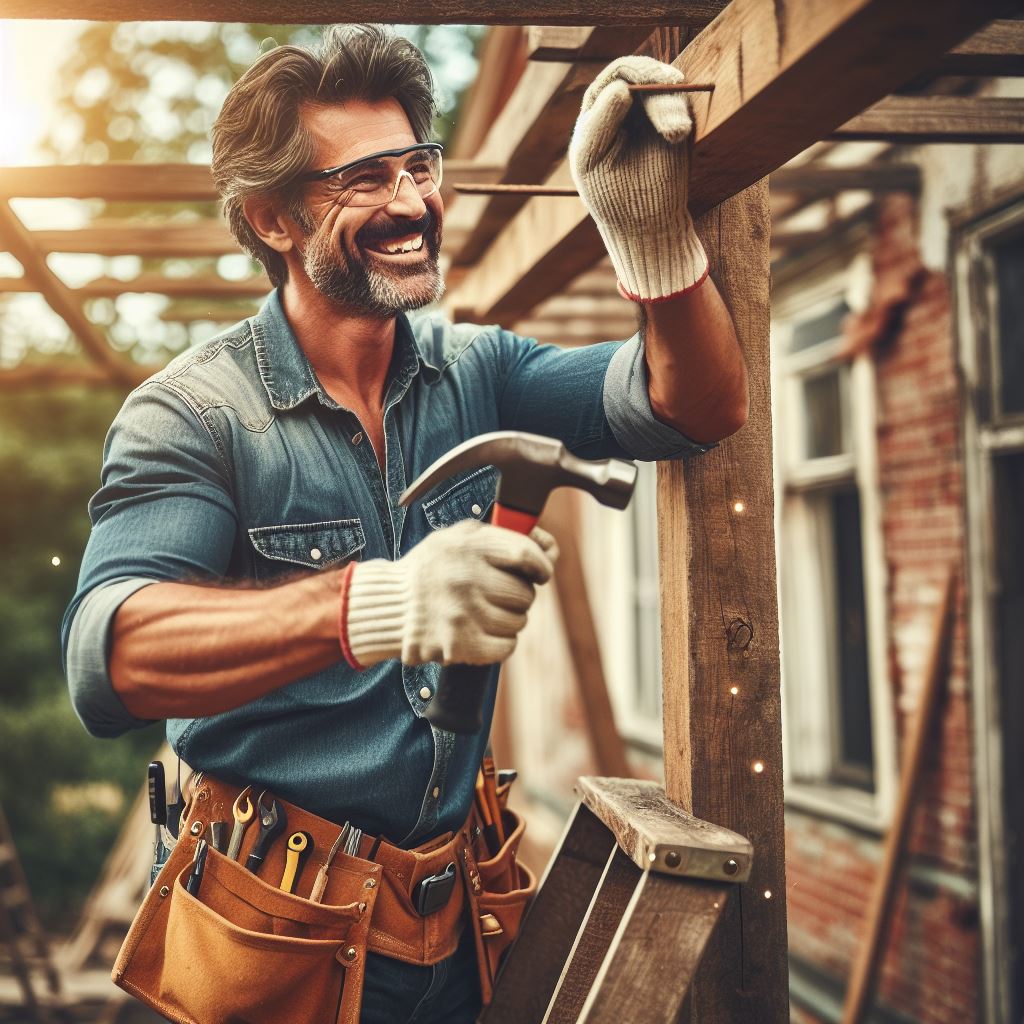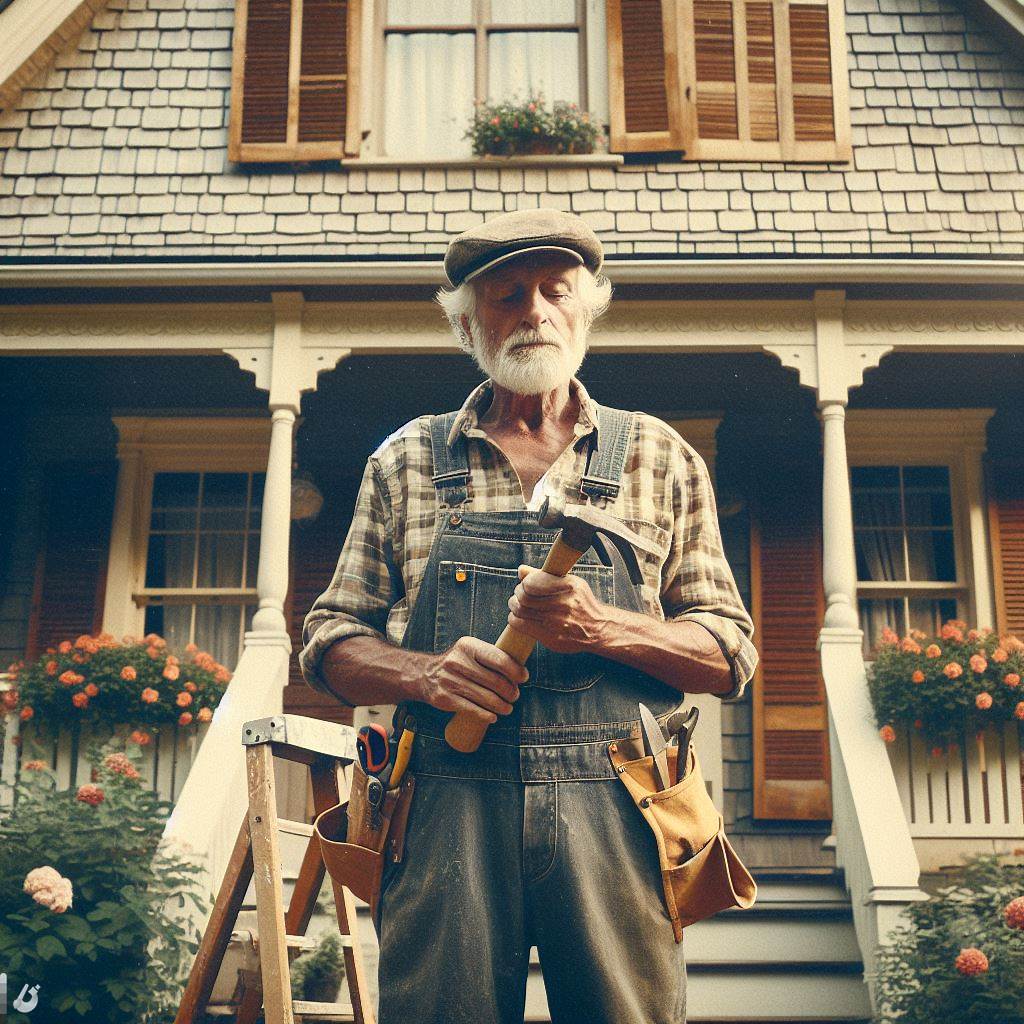Introduction
Eco-friendly upgrades in old houses are crucial for preserving the environment and reducing energy consumption.
Implementing these practices can lead to numerous benefits such as lower utility bills and improved air quality.
By incorporating eco-friendly upgrades into old houses, we not only reduce our carbon footprint but also play a significant role in environmental conservation.
Making these upgrades leads to a more sustainable lifestyle that benefits both the homeowners and the planet.
One of the primary benefits of implementing eco-friendly practices is the reduction in energy consumption.
Upgrading old houses with energy-efficient appliances, insulation, and windows can significantly lower utility bills, saving homeowners money in the long run.
Additionally, eco-friendly upgrades can greatly improve indoor air quality.
By using non-toxic building materials and installing proper ventilation systems, old houses can avoid the accumulation of harmful pollutants, ensuring a healthier living environment for residents.
Furthermore, eco-friendly upgrades contribute to the overall comfort and functionality of old houses.
Proper insulation and weather sealing can help maintain a consistent temperature, making the house more comfortable throughout the year.
Implementing eco-friendly practices also increases the value of old houses.
With the growing emphasis on sustainability, potential buyers are now more inclined towards properties with energy-efficient upgrades.
In essence, eco-friendly upgrades are crucial for old houses to reduce energy consumption, improve air quality, enhance comfort, and increase property value.
By making environmentally conscious choices, homeowners can create a sustainable living space while enjoying the numerous benefits that come with it.
Assessing Energy Efficiency
When it comes to making eco-friendly upgrades for old houses, it is essential to start by assessing the energy efficiency of the home.
Transform Your Real Estate Decisions
Unlock personalized real estate insights crafted just for you. Get actionable advice designed to amplify your success.
Get StartedBy conducting an energy audit, homeowners can identify areas of improvement and monitor energy usage to make informed decisions.
Here are the key steps in the process:
Conducting an Energy Audit
An energy audit is a comprehensive evaluation of a home’s energy performance. It involves inspecting various aspects of the house to identify energy inefficiencies.
Here’s what it typically includes:
- Inspecting windows and doors for air leaks or inadequate insulation.
- Evaluating the insulation in walls, attic, and basement, looking for areas of improvement.
- Checking the efficiency of heating and cooling systems, including ductwork.
- Assessing the lighting system’s energy consumption and suggesting energy-efficient alternatives.
- Reviewing household appliances and recommending energy-saving replacements if necessary.
Identifying Areas of Improvement
Once the energy audit is completed, homeowners can determine specific areas where improvements can be made to enhance energy efficiency.
Here are some common findings:
- Insufficient insulation in walls or roof, leading to significant heat loss or gain.
- Drafty windows and doors that allow air leakage and result in high energy consumption.
- Outdated heating and cooling systems that are inefficient and costly to run.
- Inefficient lighting fixtures that consume excessive energy and produce unnecessary heat.
- Old appliances that are energy hogs and need to be replaced with energy-efficient models.
Monitoring Energy Usage
After identifying the areas of improvement, monitoring energy usage is crucial to understanding the impact of eco-friendly upgrades.
Here are some steps homeowners can take:
- Keep track of monthly energy bills to observe any fluctuations and analyze the reasons behind them.
- Invest in smart energy meters or home energy monitoring systems to monitor real-time electricity consumption.
- Make use of the information provided by these systems to identify energy-intensive appliances or activities.
- Implement energy-saving habits like turning off lights when not in use, using natural light, and optimizing thermostat settings.
- Compare energy usage before and after upgrades to measure the effectiveness of eco-friendly improvements.
Assessing energy efficiency through an energy audit, identifying areas of improvement, and monitoring energy usage are essential steps in making eco-friendly upgrades for old houses.
By taking these actions, homeowners can optimize energy consumption, reduce utility costs, and contribute positively to the environment.
Read: Navigating Tough Talks: Real Estate Negotiation
Insulation and Weatherization
Upgrading Insulation Materials
Revitalize your old house’s energy efficiency by embracing modern insulation materials.
Swap out outdated insulation for eco-friendly alternatives that provide superior thermal performance.
Choose sustainable options like recycled denim or cellulose insulation to reduce your environmental footprint.
Showcase Your Real Estate Business
Publish your company profile on our blog for just $200. Gain instant exposure and connect with a dedicated audience of real estate professionals and enthusiasts.
Publish Your ProfileThese materials not only conserve energy but also promote healthier indoor air quality.
Seal gaps and crevices in your home’s structure to prevent heat loss. Attics, walls, and floors are prime areas for insulation upgrades.
By investing in quality insulation, you’ll create a snug and energy-efficient living space.
Sealing Air Leaks
Combat energy wastage by addressing pesky air leaks that compromise your home’s thermal integrity.
Conduct a thorough inspection to identify and seal gaps around windows, doors, and other potential weak points.
Weatherstripping is a cost-effective solution to eliminate drafts. Apply it around windows and doors to create a tight seal, preventing unwanted air infiltration.
This simple upgrade not only conserves energy but also enhances your home’s overall comfort.
Consider employing expanding foam insulation to fill larger gaps and crevices effectively.
This proactive approach significantly reduces the workload on your heating and cooling systems, leading to long-term energy savings.
Installing Energy-Efficient Windows and Doors
Upgrade your home’s aesthetic and energy efficiency simultaneously by installing high-performance windows and doors.
Opt for double or triple-pane windows with low-emissivity coatings to enhance insulation and reduce heat transfer.
Invest in energy-efficient doors made from sustainable materials. Look for those with a tight seal to prevent air leaks.
Consider adding storm doors for an extra layer of protection against the elements, further improving your home’s insulation.
By integrating these eco-friendly upgrades, you’ll not only revitalize your old house but also contribute to a more sustainable future.
Embrace the power of insulation and weatherization, and watch your home become a beacon of energy efficiency.
Energy-Efficient Appliances
Upgrading your old appliances to energy-efficient models is a great way to make your home more eco-friendly and reduce energy consumption.
Here are some key points to consider:
Replacing old appliances with energy-efficient models
- Investing in new appliances can significantly reduce your energy consumption and lower utility bills.
- Old appliances tend to be less energy-efficient and consume more electricity, contributing to environmental degradation.
- Look for appliances with the Energy Star label, which indicates high energy efficiency and lower greenhouse gas emissions.
Benefits of Energy Star-rated appliances
- Energy Star-rated appliances consume less energy, leading to energy savings and decreased utility costs.
- These appliances are designed to have a smaller carbon footprint, reducing greenhouse gas emissions.
- By choosing Energy Star-rated appliances, you contribute to a healthier environment and support sustainable living.
- Many energy-efficient appliances also offer advanced features, improving functionality and convenience in your home.
Tips for choosing the right appliances
- Consider the size and capacity of the appliance to ensure it meets your household’s needs.
- Read product labels and compare energy consumption ratings to choose the most efficient option.
- Look for appliances with smart technology or timers, allowing you to automate energy usage and reduce waste.
- Research different brands and models to find those known for their durability and long lifespan.
- Take advantage of government programs or incentives that offer rebates or discounts for energy-efficient appliances.
By upgrading your appliances to energy-efficient models, you can enjoy several benefits, including:
- Reduced energy consumption and lower utility bills.
- Contribution to environmental conservation by reducing overall greenhouse gas emissions.
- Improved functionality and convenience with advanced features.
- Longer lifespan and durability of appliances, resulting in cost savings in the long run.
- Potential rebates or discounts offered through government programs or incentives.
Remember, small changes can make a big difference! By taking the initiative to upgrade your appliances, you are not only benefitting your wallet but also making a positive impact on the environment.
Read: Budgeting Tips for Historic Renovations
Alternative Energy Sources
Installing Solar Panels
Harnessing the sun’s boundless energy is a transformative step in making your old house more eco-friendly.
Solar panels, typically mounted on the roof, capture sunlight and convert it into electricity through photovoltaic cells.
This clean energy source not only reduces your reliance on conventional power grids but also provides a cost-effective solution in the long term.
By installing solar panels, you contribute to a sustainable future, decrease your carbon footprint, and enjoy the benefits of renewable energy.
Utilizing Geothermal Heating and Cooling Systems
Geothermal systems present an innovative approach to achieving energy efficiency in your old house.
These systems utilize the Earth’s constant temperature beneath the surface to regulate indoor climate throughout the year.
By tapping into this stable temperature, geothermal heating and cooling systems minimize energy consumption, resulting in reduced utility bills and a more environmentally conscious lifestyle.
Embracing this technology ensures a comfortable living space while actively participating in the global shift towards sustainable energy practices.
Harnessing Wind Power
Incorporating wind power into your eco-friendly home upgrade involves installing a residential wind turbine.
This device converts the kinetic energy from the wind into electrical power, complementing the energy generated by solar panels.
Showcase Your Real Estate Business
Publish your company profile on our blog for just $200. Gain instant exposure and connect with a dedicated audience of real estate professionals and enthusiasts.
Publish Your ProfileResidential wind turbines are available in various sizes and designs, making them adaptable to different settings.
By embracing wind power, you diversify your renewable energy sources, increasing the reliability of your green energy supply.
This addition not only contributes to a cleaner environment but also empowers you to be more self-sufficient in meeting your household energy needs.
In summary, each of these alternative energy sources—solar panels, geothermal systems, and wind power—offers unique advantages in transforming your old house into an eco-friendly haven.
These upgrades not only enhance your home’s sustainability but also position you as a responsible steward of the environment.
Embrace these technologies to create a living space that aligns with a greener, more sustainable future.
Water Conservation Measures
Water is a valuable resource, and taking steps to conserve it in older homes is both environmentally conscious and cost-effective.
Here are some eco-friendly upgrades to consider:
Installing Low-Flow Fixtures
Upgrade your old house by swapping outdated faucets with modern, low-flow fixtures. Save water daily.
Choose aerators for kitchen and bathroom faucets. These nifty devices mix air with water, reducing usage.
Showerheads matter too. Install low-flow options, maintaining pressure while conserving water. Enjoy efficiency and savings.
Upgrading to Water-Efficient Toilets
Old toilets waste gallons. Upgrade to high-efficiency models, using less water per flush. It’s an eco-friendly investment.
Dual-flush toilets provide flexibility. Opt for a full flush for solids, and a reduced one for liquid waste.
Consider pressure-assist toilets. They use air pressure to flush effectively, saving water and reducing your environmental footprint.
Collecting Rainwater for Irrigation
Utilize rainwater for your garden. Install a rain barrel beneath your downspout. It’s a simple, effective eco-friendly upgrade.
Rain barrels capture runoff. This collected water is a valuable resource for your plants, reducing reliance on traditional sources.
Use a first flush diverter. This mechanism ensures the initial dirty water doesn’t reach your storage, maintaining rainwater quality.
In short, water conservation in old houses is achievable. Install low-flow fixtures, efficient toilets, and collect rainwater.
Embrace these eco-friendly upgrades for a sustainable, water-efficient home. Save resources and reduce your environmental impact today.
Read: Finding Right Materials for Old Homes

Sustainable Materials and Finishes
Using recycled or reclaimed materials
One of the most efficient ways to make eco-friendly upgrades to old houses is by incorporating recycled or reclaimed materials.
These materials not only reduce waste but also add character and charm to your home.
From reclaimed wood for flooring to recycled glass for countertops, there are numerous options to choose from.
Choosing sustainable Flooring Options
When it comes to sustainable flooring, there are several choices available. Bamboo flooring is a popular option as it grows quickly and is highly renewable.
Another alternative is cork flooring, which is made from the bark of cork oak trees and is both sustainable and durable.
Additionally, linoleum flooring, made from natural materials such as linseed oil, jute, and cork powder, is also an eco-friendly option.
Opting for low VOC paints and finishes
Volatile Organic Compounds (VOCs) are chemicals found in many traditional paints and finishes that can release harmful gases into the air.
To minimize indoor air pollution, it is imperative to choose low VOC paints and finishes for your old house.
These eco-friendly options are not only better for the environment but also for your health.
By adopting these sustainable materials and finishes, you can significantly reduce your old house’s carbon footprint and create a healthier living space for you and your family.
Showcase Your Real Estate Business
Publish your company profile on our blog for just $200. Gain instant exposure and connect with a dedicated audience of real estate professionals and enthusiasts.
Publish Your ProfileSmart Home Technology
Old houses can benefit from eco-friendly upgrades that incorporate smart home technology.
These upgrades not only help reduce energy consumption but also enhance the overall comfort and convenience of living in an older home.
Implementing Automated Energy Management Systems
Automated energy management systems can significantly improve the energy efficiency of old houses.
These systems use sensors and smart algorithms to monitor and optimize the energy consumption of various appliances and systems.
With these systems in place, homeowners can enjoy lower energy bills while reducing their carbon footprint.
Monitoring Energy Usage through Smart Meters
Installing smart meters allows homeowners to monitor their energy usage in real-time.
Smart meters provide detailed information on energy consumption, enabling homeowners to identify and address energy-wasting appliances and habits.
By understanding their energy usage patterns, homeowners can make informed decisions to reduce energy waste and save money.
Controlling Lighting and Temperature Remotely
Smart home technology allows homeowners to control lighting and temperature settings remotely.
By using smartphone apps or voice commands, homeowners can turn off lights and adjust thermostats from anywhere.
This feature is especially useful for old houses with outdated wiring or heating systems, as it allows for efficient energy management without costly renovations.
In general, implementing smart home technology in old houses offers numerous benefits in terms of energy efficiency and convenience.
Automated energy management systems, smart meters, and remote control capabilities are just a few examples of how old houses can be upgraded to be more eco-friendly.
By embracing these upgrades, homeowners can not only reduce their carbon footprint but also enhance their overall quality of life in their older homes.
Read: The Do’s & Don’ts of Heritage Restorations
Landscaping for Sustainability
Eco-friendly upgrades for your outdoor space
Landscaping plays a vital role in creating an eco-friendly home.
By incorporating sustainable practices into your landscape design, you can enhance the beauty of your old house while minimizing environmental impact.
Here are some eco-friendly upgrades for your outdoor space:
- Planting native species: Choose plants that are indigenous to your region as they are well adapted to the local climate and require minimal care.
Native species provide habitat for local wildlife and help preserve biodiversity. - Utilizing drought-tolerant plants: In areas prone to water scarcity, opt for plants that can thrive with minimal irrigation.
These plants have evolved to survive in arid conditions and can significantly reduce water consumption in your landscape. - Creating rain gardens and permeable surfaces: Rain gardens are designed to capture and filter rainwater runoff, reducing the burden on stormwater infrastructure.
Utilize permeable materials such as gravel, permeable pavers, or porous concrete to allow water to penetrate the ground instead of flowing into drains.
Why are these eco-friendly landscaping practices essential?
- Conservation of water resources: Planting native and drought-tolerant species reduces the need for excessive watering, thereby conserving precious water resources.
It also helps in preventing water pollution caused by runoff and excessive irrigation. - Minimizing the use of chemical fertilizers and pesticides: Native plants are well adapted to the local soil and climate, making them more resistant to pests and diseases.
This reduces the need for synthetic fertilizers and harmful pesticides, promoting a healthier ecosystem. - Supporting local wildlife: Native plants provide food and shelter for local wildlife, including birds, butterflies, and beneficial insects.
By creating a habitat in your backyard, you contribute to the overall health and diversity of the ecosystem.
How to incorporate these upgrades into your landscape design?
- Research native species: Consult local gardening resources to identify native plants suitable for your region.
Consider their growth requirements, such as preferred soil type, sun exposure, and water needs. - Plan for diversity: Aim for a mix of trees, shrubs, and flowering plants to create a diverse and vibrant landscape.
Incorporate plants that bloom at different times of the year to provide a continuous food source for pollinators. - Optimize water usage: Group plants with similar water needs together, allowing for efficient irrigation.
Install a rainwater harvesting system to collect and reuse rainwater for watering your landscape. - Design with permeability in mind: Incorporate rain gardens or bioswales to capture and absorb rainwater runoff.
Use permeable materials for walkways, driveways, and patio areas to reduce stormwater runoff. - Maintain with care: Regularly monitor your landscape for water needs, remove invasive species, and mulch around plants to conserve moisture.
Avoid the use of chemical fertilizers and pesticides unless absolutely necessary.
By implementing these eco-friendly upgrades in your old house’s landscaping, you not only contribute to a sustainable environment but also create a beautiful and inviting outdoor space.
Embrace the biodiversity of native plants and reduce your ecological footprint while enhancing the charm and value of your home.
Financial Incentives and Rebates
Making eco-friendly upgrades to your old house not only helps the environment but can also save you money in the long run.
In addition to the energy savings, there are various financial incentives and rebates available to further offset the costs of these upgrades.
Here are some key points to consider:
Researching available incentives and rebates
- Start by researching the incentives and rebates offered by federal, state, and local programs.
- Visit government websites or contact relevant authorities to gather information on available options.
- Look for programs that specifically target eco-friendly upgrades for old houses.
- Keep track of application deadlines and any required documentation for each program.
Federal and state programs for eco-friendly upgrades
- The federal government has several programs aimed at promoting sustainable renovations.
- The Energy Star program offers tax credits for energy-efficient upgrades like solar panels and insulation.
- State energy offices often provide rebates or grants for eco-friendly improvements.
- Check your state’s official energy office website for available programs and eligibility requirements.
Financing options for sustainable renovations
- If you need financial assistance for your eco-friendly upgrades, there are financing options available.
- Some banks offer special loans or lines of credit for energy-efficient home improvements.
- Look for lenders that specialize in green financing or energy-efficiency loans.
- These loans may have lower interest rates or longer repayment terms compared to traditional financing.
- Inquire about any specific requirements or documentation needed to apply for these loans.
- Additionally, certain programs offer grants or subsidies that can help cover the costs of sustainable renovations.
It’s essential to thoroughly explore all available incentives, rebates, and financing options before beginning your eco-friendly upgrades.
By taking advantage of these opportunities, you can significantly reduce the expenses associated with making your old house more sustainable.
This approach not only benefits the environment in the long run but also makes financial sense for homeowners.
Conclusion
We have discussed several eco-friendly upgrades that can be made to old houses.
These include installing energy-efficient windows and appliances, improving insulation, using sustainable building materials, and implementing rainwater harvesting systems.
It is important for homeowners to take steps towards a greener home to reduce their carbon footprint and contribute to a more sustainable future.
By making these eco-friendly upgrades, not only will you have a positive impact on the environment, but you can also save money on energy bills in the long run.
Showcase Your Real Estate Business
Publish your company profile on our blog for just $200. Gain instant exposure and connect with a dedicated audience of real estate professionals and enthusiasts.
Publish Your ProfileRecapping the main points, eco-friendly upgrades for old houses include energy-efficient windows, appliances, insulation, sustainable materials, and rainwater harvesting systems.
We encourage everyone to take action and make these upgrades to their homes.
By doing so, you can create a healthier living space for yourself and your loved ones, while also making a difference in the world.
In the long term, adopting eco-friendly practices will not only benefit the environment but also contribute to a more sustainable future for generations to come.
So, let’s embrace these upgrades and work towards a greener and healthier home!




